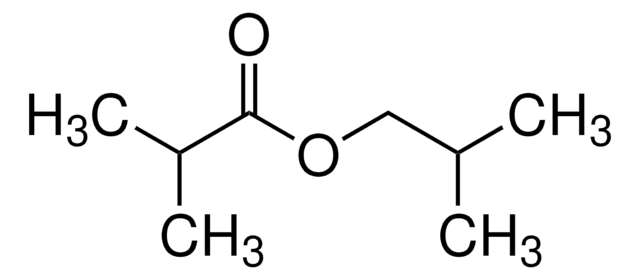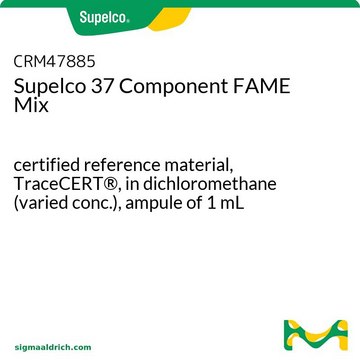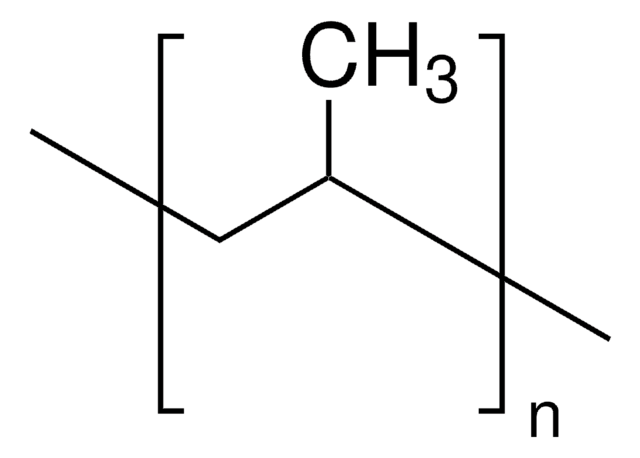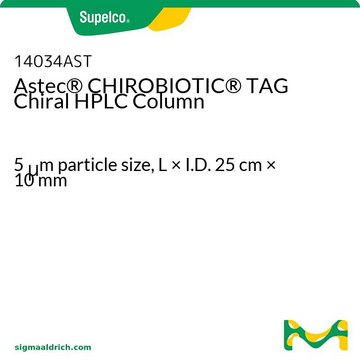53023AST
Astec® CLC-D Chiral (5 μm) HPLC Columns
L × I.D. 15 cm × 4.6 mm, HPLC Column
Synonim(y):
Kolumna CLC-D do separacji chiralnej
About This Item
Polecane produkty
Nazwa produktu
Astec® CLC-D Chiral HPLC Column, 5 μm particle size, L × I.D. 15 cm × 4.6 mm
Materiały
stainless steel column
agency
suitable for USP L32
linia produktu
Astec®
opakowanie
pkg of 1 ea
producent / nazwa handlowa
Astec®
Parametry
0-50 °C temperature
172 bar pressure (2500 psi)
metody
HPLC: suitable
dł. × śr. wewn.
15 cm × 4.6 mm
Matryca
fully porous particle
grupa aktywna macierzy
chiral bidentate ligand (D-form), requires 5 mM CuSO4 phase
wielkość cząstki
5 μm
wielkość porów
100 Å
pH robocze
3.5-7
metoda separacji
chiral
Opis ogólny
Features:
- Separates α-hydroxy carboxylic acids, amino acids and other α-bifunctional compounds
- High selectivity with simple mobile phases
- Copper complex gives strong UV 254 nm signal
- Simple reversal of elution order, CLC-L vs. CLC-D
- Excellent reproducibility
(1) Davankov, V. A.; Rogozhin, S. V. Ligand chromatography as a novel method for the investigation of mixed complexes: Stereoselective effects in a-amino acid copper(II) complexes. J. Chrom. A. 1971, 60, 284-312.
Informacje prawne
Wybierz jedną z najnowszych wersji:
Masz już ten produkt?
Dokumenty związane z niedawno zakupionymi produktami zostały zamieszczone w Bibliotece dokumentów.
Protokoły
Separation of DL-Tartaric acid, ≥99%
Powiązane treści
Astec CLC Copper Ligand Exchange Chiral HPLC Columns. The Astec CLC phases are based on coupling an enantiomeric form of an amine to a proprietary Astec derivative to create an appropriate distance for copper coupling.
Chromatograms
application for HPLCapplication for HPLCNasz zespół naukowców ma doświadczenie we wszystkich obszarach badań, w tym w naukach przyrodniczych, materiałoznawstwie, syntezie chemicznej, chromatografii, analityce i wielu innych dziedzinach.
Skontaktuj się z zespołem ds. pomocy technicznej






